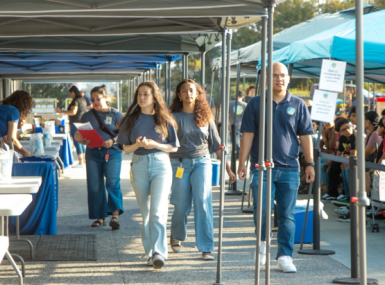Area agencies on aging address elders’ health needs where they live
Author

Sandy Markwood

Marisa Scala-Foley
Upcoming Events
Related News

County governments play a lead role in meeting the health and human services of all of their citizens, especially the most vulnerable. Health happens in the home, and our health care system is increasingly recognizing and responding to that by paying attention to what are called the social determinants of health or SDoH, defined by the Centers for Disease Control and Prevention as “conditions in the places where people live, learn, work and play.”
Eighty percent of health outcomes are driven by the physical environment in which a person lives — socioeconomic factors such as nutrition, income and social supports — and other behavioral factors including diet and exercise, substance use and more.
Addressing these factors and better meeting the needs of older adults and their families requires community-driven solutions and cross-sector partnerships between the health care system and community-based social services organizations (CBOs) such as Area Agencies on Aging (AAAs), more than 50 percent of which are based in county government or are part of Regional Councils of Government (COG). And there is growing interest and opportunity to forge new relationships between the two sectors to serve the nation’s rapidly growing aging population.
There is often a disconnect between the worlds of health care and social services, with each sometimes having different goals, different terminology and different ways of being paid.
But individuals and their families fare better when all of their health needs and preferences are being taken into account, and where older people overwhelmingly prefer to have their health needs met and services provided is in their homes and the communities in which they live.
This, along with the need to drive health care utilization and costs down, has led to a movement toward coordination and integration of health care and social services (or long-term services and supports). This movement is increasingly supported by policy such as the new flexibility afforded to Medicare Advantage plans.
This presents unique opportunities for AAAs to contract with health care providers and payers that are looking to address the health-related social needs of the people whom they serve. AAAs have unique knowledge of and a mission to serve older adults in your community, and get things done, and as such, health care organizations are increasingly reaching out to them to partner and contract for home and community-based services that can help to meet the needs of their members and patients. For AAAs, these contracting opportunities offer them the chance to further their mission to address needs of individuals and families in their communities, and support the local health care community, as well as to generate sustainable revenue sources.
The good news is that in many areas of the country, contracting between health care entities and AAAs is already happening. Nearly 44 percent of AAAs that responded to a Request for Information survey of community-based aging and disability organizations done by n4a’s Aging and Disability Business Institute indicated that they currently had one or more contracts with health care entities, including health plans, health systems, state Medicaid agencies, Veterans Administration medical centers, Accountable Care Organizations and more.
About 40 percent of those AAAs that indicated that they had health care contracts were part of county government or councils of government. The most common services provided under contract were things like care coordination, care transitions or discharge planning, assessment for eligibility for long-term services and supports, nutrition programs and evidence-based health promotion programs such as fall-prevention programs. And through these contracts, AAAs are able to serve high-need populations such as individuals at risk of nursing home placement or admission/readmission to a hospital. In addition, AAAs and other CBOs are increasingly contracting with health care entities as part of regional or state CBO networks, with over 30 percent of those with health care contracts indicating that they had entered into such contracts as part of a network.
In order to maximize and expand the opportunity to serve older adults, this work needs buy-in at all levels with the agency and your county — agency leadership, staff, subcontractors and advisory boards and commissions; county executives; county commissioners and other county departments including Legal, Insurance and Compliance. If your AAA and other CBOs in your county don’t do this work, health care providers and payers may decide to use national vendors for these services, who don’t know your citizens as well and which will also send money out of your county.
But with that in mind, contracting with health care organizations can offer tremendous benefits for both your AAA and your county. For AAAs, it can offer new funding from different sources and increased agency net revenue, expanded visibility in the community as a valuable health partner and the opportunity to serve more people living in your county.
As an example, the AAA in Chautauqua County, N.Y. saw their income from care transitions work that they were doing with managed long-term care plans and through private pay services grow by more than 500 percent over seven years, which enabled them to serve more citizens. For your county, it can help to increase revenue, reduce waiting lists for services, grow local businesses and create jobs, serve a growing senior population and help them to keep them living safely and with dignity and choices in their communities for as long as possible.

Attachments
Related News

National Association of Counties expands programming to build childcare supply
NACo announces the launch of its Childcare Supply Network. This new peer learning network will support local leaders in addressing childcare challenges and co-creating sustainable solutions to strengthen local childcare systems in response to workforce needs.

California county program helps spark student careers
San Diego County created a win-win program to fill open staff vacancies and give college students real-world work experience.

California county, non-profit help launch child-care startups
Adrianna Segura, a Stanislaus County, Calif. mother of two, was licensed to be a home-based child-care provider, but she didn’t know the first thing about starting a business. She knew how to take care of children, but she wasn’t sure how to file taxes, create contracts or what her rate should be.